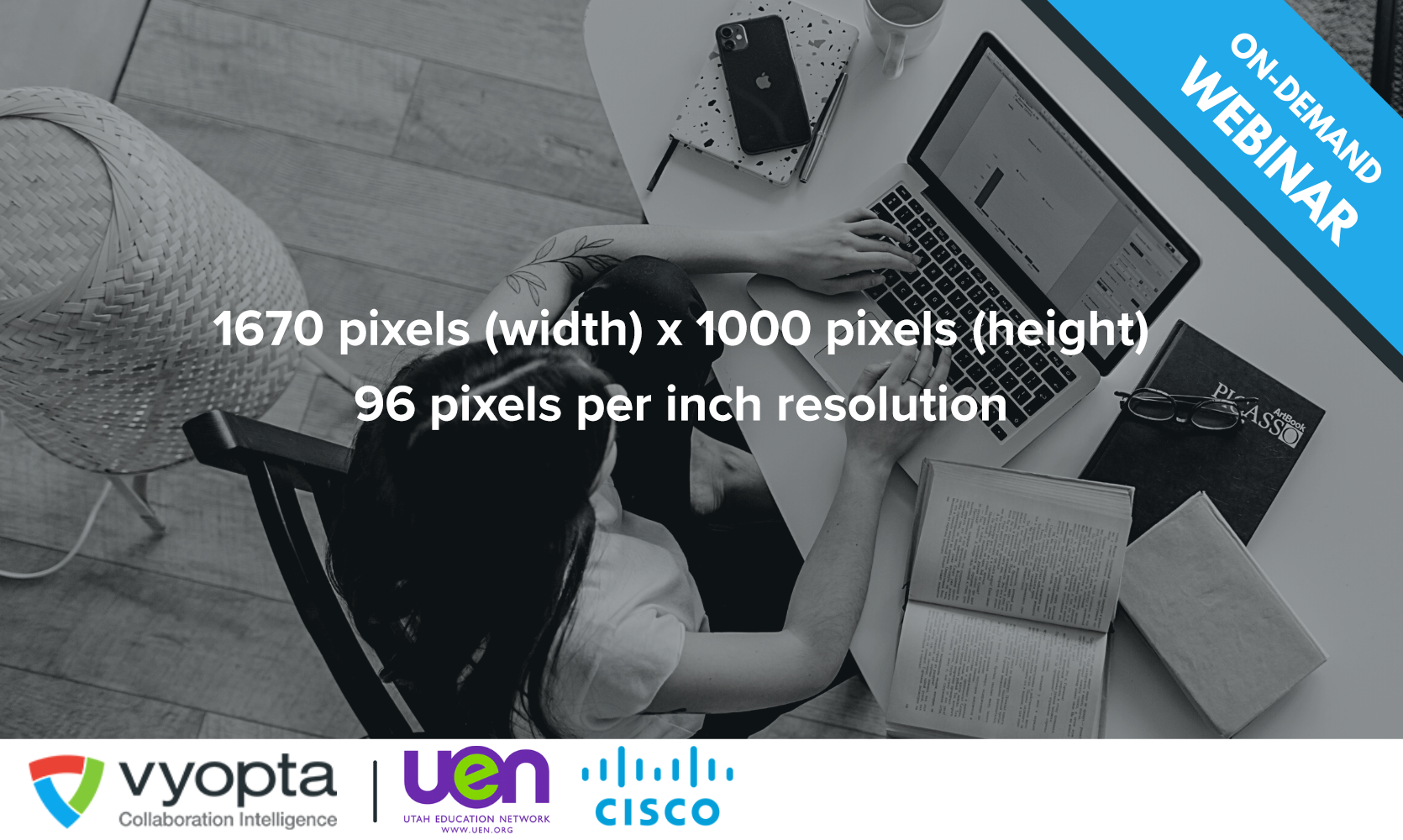.png)
Vyopta CEO Alfredo Ramirez recently spoke with Thomas Capone, CEO and chairman of the New York Distance Learning Association, on his Coffee In The Clouds podcast. In addition to matters of interest to educators and students, Ramirez discussed trends in collaboration and work practices as major enterprises across the globe adapt to life after the Covid-19 pandemic. Read more from their interview here.
For those in the audience that might not know, what is Vyopta?
Vyopta is a collaboration intelligence company. We are really focused on performance management of unified communications, starting with video and then most recently advancing that to what we refer to as collaboration intelligence. What that means is that like in sports, how do you get the best performance from people, assets, physical assets, and electronic assets? It’s through analytics and insights. And we view the world of collaboration in the same fashion. It’s great to have technology like what we’re using today to communicate and collaborate, but how do you do it more effectively to have a competitive edge over someone else? That’s where Vyopta comes in. We provide analytics and insights around technology, workspaces and people.
I run the Distance Learning Association, which has really become digital learning, and digital living at this point which covers everything from remote work, telemedicine, the cloud, etc.. I told people I’m going to do a video podcast with the CEO of Vyopta. About half of them said, well, “What’s Vypota?” And the other half go, “Oh my God, we love Vyopta!” What is it that makes someone become your client, your customer? And how do we better educate those who might not be aware of what’s possible through your technology?
We don’t have a very large footprint of education customers today, but we do have many of the who’s who in education, ranging from Stanford, Duke and other universities. At the end of the day I’d say where we can help organizations, whether it’s education, health care and other verticals in the market, providing these insights around technology, and how do we improve the digital experience that has to work. If it doesn’t work. then we can’t collaborate effectively. The next pillar of the solution is providing insights like do you collaborate more effectively using other assets that improve the collaboration experience in the workspace? The third pillar is people. I’ll go back to the sporting sports analytics analogy. You may have someone training for a race and there could be a proxy of metrics for things like distance, or timing of running specific distances. But you don’t have all the metrics around intensity over time. It’s a great proxy at least to have some basic insights to measure and manage and to improve performance. We truly believe in those three dimensions of technology, people and the workspace, which could be in the office or at home.
Is the challenge that people are not aware that these data and insights are available, or they’re not geared to take advantage of it and then properly use the knowledge and the information for their own needs?
The primary persona of the Vyopta solution has been IT and we are advancing that to increase the user base to well beyond just the IT organization. So that’s part of why a lot of folks may not know about Vyopta. It’s been a backend information technology tool and we’re going to make it available to others. Years ago, you’d have to be a Fortune 1000 company to afford video conferencing. You had the old PicTel and Tandberg units, but today we have things like Zoom and many others that are making it ubiquitous.
If I was going to fill a room with 1,000 members and I said, Alfredo, who do you want the room? Is it the CEO, the CIO, the CFO, the CXO? Who is it that’s ultimately going to say, “Boy, we need to do business with Vyopta.”?
With the current solution, it’s going to be the CIO, making sure that he or she and the team can deliver the best digital experience experience to the user base at that enterprise. The other would be the head of facilities real estate, which could be the CFO… that person and the people responsible for workspace would have an interest in using Vyopta today. Over time, we’ll be releasing new modules to begin providing more insights around what can we be doing as individuals or managers. That’s part of our user insights that will be coming in up in the next few quarters, and then we’ll be extending that out to all end users as well.
How did Covid affect Vyopta? Did it force you to pivot or force you to change? What was the result of the last 12 to 15 months of our new reality?
We had previously a great strength in monitoring and analytics of UC on-premise devices and infrastructure. With UC as a service in the cloud we didn’t have the support quite as well as what we have today. I wouldn’t call it a pivot, but it was definitely a rapid advancement in covering all the major UC technologies in the cloud because they were being adopted for supporting remote work and business continuity. What also worked in our favor was these vendors improved their application programing interfaces, the APIs for us to get even more telemetry data. And during that time we were also rebuilding our entire platform and now we have a platform that’s highly scalable, secure, extensible and flexible to support data collection from any data sources. Today with call volumes as high as they are and the telemetry data we’re collecting on a continual basis, the Vyopta cloud can support that much better and cost effectively than previously.
If there are two companies, very similar competitors but one is using Vyopta and the other is not, what happens?
Going back to the sports analogy, if we can provide the analytics and the insights to help the enterprise to get more from their assets of technology, workspaces and people, then they will be able to perform much more effectively than the group that doesn’t use Vyopta.
We have companies that are saying we’re going to work from home from now on, and then others for whatever reason say they’re all going to go back to the office. How will those decisions of corporate America and higher education, the conversations everyone in the public sector and private sector are having… how will those affect Vyopta moving forward?
I believe most organizations, and this is not our data point but what Gartner, Forrester, Frost and Sullivan and others that have interviewed executives across many, many verticals… the summary of all the that data is indicating that 80 percent of the enterprises globally will be supporting a more flexible work model of working in the office and remotely. And it could be home office or anywhere. The other part is the office space will have to be equipped with more technology. I truly believe it’s going to be maybe not 100 percent, but it’s going to grow significantly, especially now as the price per video endpoint has dropped significantly and it continues to drop. You can get a really inexpensive endpoint for nearly the price of a VoIP phone that was bought back in 2000.
That would indicate there should be a proliferation of endpoints being used in the office space to support virtual teams, people that are working remote, that aren’t going in that day when they have to meet with those who are in the office. That demand, it should continue to increase and Vyopta is in a really good place. We significantly improved remote work support during the pandemic and support the on-premise technologies and devices, whether it’s endpoints, audiovisual, and in health care it can be patient observation systems connected to endpoints. In education it would be the classroom setup where maybe not all the student students will be coming in every day because maybe there aren’t teachers or subject matter experts for every school.
Learn more about collaboration and the future of work from Vyoptaverse.

Chad Swiatecki is a business writer and journalist whose work has appeared in Rolling Stone, Billboard, New York Daily News, Austin Business Journal, Austin American-Statesman and many other print and online publications. He lives in Austin, Texas and is a graduate of Michigan State University. Find him online on LinkedIn.


.png)
